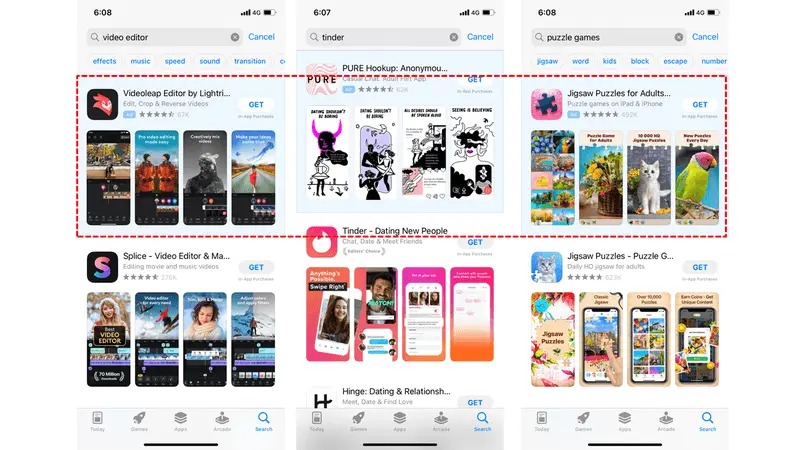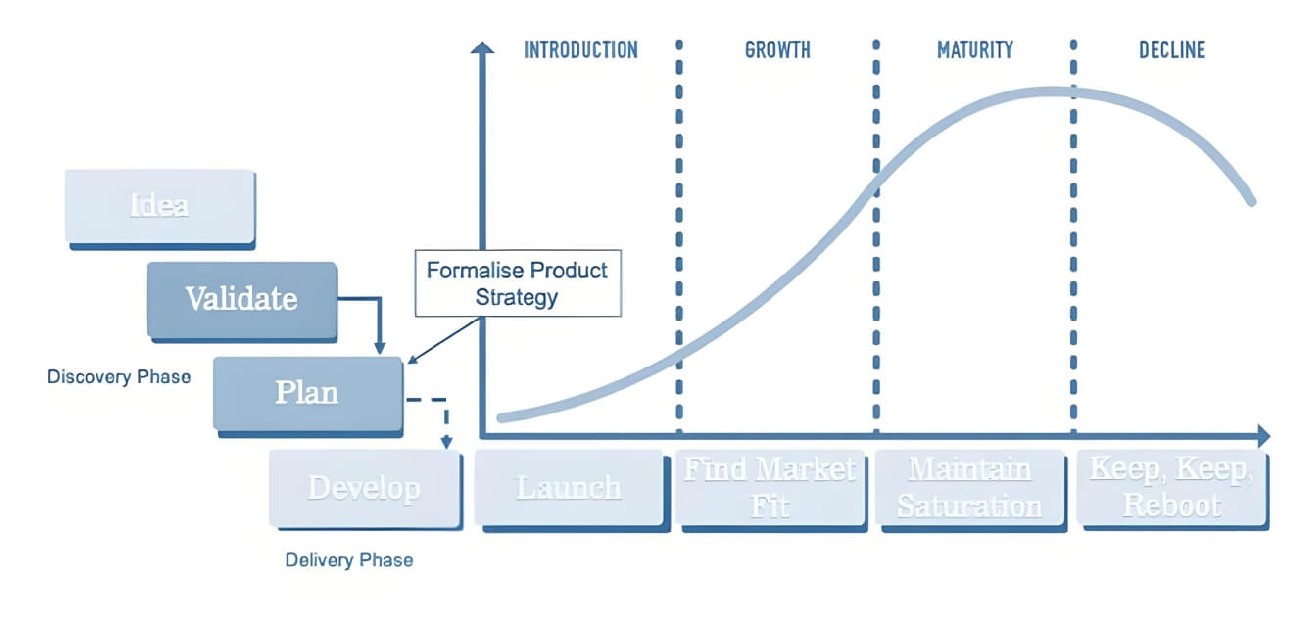A brand marketing strategy is crucial to the success of a company, guiding it steadily through market competition. How should a brand marketing strategy be built? The author provides an analysis from five dimensions.

A brand marketing strategy is essential for the success of a company. It functions like the guidance from parents in a child's growth, leading the company steadily through market competition. A well-designed marketing plan not only helps a company clarify its market positioning but also ensures the adoption of appropriate strategies and actions at different stages.
When building a brand marketing strategy, it is necessary to deeply understand consumer needs, identify the brand's core values and characteristics, and choose the right marketing channels for promotion. Only by progressively advancing brand marketing and focusing on interaction and communication with consumers can a company win consumer trust and loyalty, ultimately achieving its growth and success.
This means that building a brand marketing strategy involves understanding consumer needs, establishing accurate brand positioning, creatively attracting target audiences, effectively communicating brand messages, and sustaining operations and maintenance. These aspects are interconnected and mutually supportive, forming a complete framework for the brand marketing strategy. This framework helps a company successfully build and maintain a strong brand image, enabling it to stand out in the competitive market.
1. Insight into Consumer Needs
This step involves deeply uncovering the desires and preferences hidden within consumers, revealing endless market opportunities and exploring new strategies and tactics. During this process, companies can not only more accurately position their products and services but also effectively improve marketing effectiveness, thus overcoming fierce market competition.
However, gaining insight into consumers is no easy task. In this complex market environment, consumers often unintentionally set traps that can lead companies without a "sharp eye" into difficulties. This requires companies to both align with human nature and dare to challenge it.
From a static perspective, aligning with human nature seems to be a wise choice, as consumers are often more likely to accept products and services that meet their psychological needs.
Take Coca-Cola, a globally renowned brand with a history of over a century, for example. The company has always understood consumer psychology and precisely captured market demands. From the classic flavors it has passed down to the innovative products targeted at different consumer groups, Coca-Cola has continuously satisfied consumer taste preferences. Through creative advertising campaigns and collaborations with major events like sports games and music festivals, Coca-Cola has successfully captured consumer attention and established a youthful, energetic brand image. This deep understanding of consumer needs and flexible response to market changes has allowed Coca-Cola to maintain a leading position in fierce market competition.
Moreover, Coca-Cola dares to challenge market trends and lead new consumer demands. In response to the rise of health consciousness, Coca-Cola swiftly launched health-focused drinks, showcasing its keen market insight and rapid responsiveness. Through interaction with consumers, Coca-Cola has built a close brand relationship, enhancing consumer loyalty. These initiatives not only display Coca-Cola's innovative spirit but also lay a solid foundation for the long-term development of its brand. Coca-Cola's success can be attributed to its deep understanding of consumer needs, its willingness to challenge and lead market trends, and its brand marketing strategy.
However, when we examine the market from a dynamic perspective, we realize that appropriately altering human nature can also yield great potential. For instance, laziness is a common human trait, which has created the demand for simpler, more convenient, and easier living. With the development of technology and rising living standards, products like smart floor washers, automatic dishwashers, and point-and-shoot cameras have emerged to meet consumer needs. However, market changes are always hard to predict. As living standards and environments change, some trends seemingly contrary to laziness have started to appear. For example, people are changing clothes more frequently, getting haircuts more often, and engaging in more leisure activities like learning or exercising. What consumer psychology lies behind these phenomena? What market opportunities do they indicate?
This requires us to deeply understand the inner world of consumers, comprehend their needs and motivations. Only then can companies stand out in the competitive market and seize the pulse of the market for sustained development.
2. Precise Brand Positioning
The importance of brand positioning lies in its role as the core of the market and the bridge that deeply connects the brand with consumers. It represents the unique identity of a company in fierce market competition and shapes the direct perception of the brand image by consumers. The complexity of brand positioning involves multiple dimensions, including but not limited to market positioning, target audience positioning, pricing strategy, brand image building, distribution channel strategies, and geographic identification.
For example, Apple positions its products through high-end pricing and innovative design, establishing an image in consumers' minds that represents quality and advanced technology. This precise brand positioning has allowed Apple to occupy a significant position in its target market and become a key consideration for consumers' purchasing decisions. To establish a unique position in the minds of target consumers, a brand must carefully craft products, brands, and corporate images that match its target market. A brand’s role goes beyond being merely a product information transmitter; it becomes an important reference during the purchasing process, carrying the product’s value proposition and connecting the company with consumers. It is an essential part of market positioning.
In the process of brand positioning, companies need to start from meeting consumer needs and use effective communication strategies to establish a strong and distinctive brand image in consumers' minds. This requires the brand to deeply understand the target consumers' lifestyle, purchasing behavior, and psychological needs.
Brand positioning is a strategic process that transforms product features into consumer benefits. Brands need to consider what value consumers expect from them, which may stem from the product's actual functions or the emotional or symbolic meaning conveyed by the brand.
Therefore, key benefits in brand positioning should include not only the product's advantages but also psychological and emotional benefits. The relationship between a brand and its positioning is complementary and inseparable: the brand represents consumers' recognition and evaluation of the product, while positioning is the strategic process through which the company conveys its brand value and image.
By achieving precise brand positioning, companies can more effectively meet consumer needs, enhance their market competitiveness, and ultimately achieve sales goals.
3. Using Creativity to Attract Target Audiences
Creativity is a core element in marketing. It attracts and moves the target audience through unique ideas and perspectives. The essence of creativity lies in breaking traditional frameworks and challenging conventional thinking. It is the clever combination and reshaping of existing resources and foundations. This innovation not only draws inspiration from the strengths of others but also integrates its unique perspective and actual needs, creating a fresh way of expression that captivates attention.
Creativity is not an abstract concept; it is built upon solid market analysis and a deep understanding of the target audience. It requires finding a balance between deep emotion and rational thought, uncovering the truths hidden beneath the surface. Through clever extension, combination, and innovation, creativity can guide consumers toward a new perspective, allowing them to experience the unique charm and value of the brand while enjoying the product or service.
Successful brand creativity is characterized by novelty, shock, impact, and effectiveness. A successful brand creative not only attracts consumers' attention but also aligns with the brand's own positioning, maximizing commercial benefits.
For example, a well-known beverage brand successfully attracted young consumers by launching limited-edition flavors and packaging designs, sparking widespread discussion and sharing on social media, thereby increasing brand awareness and sales. In short, creativity is an important tool to enhance brand value and shape brand image.
By deeply exploring and activating resource combinations, companies can create compelling and influential brand creativity, bringing new experiences and feelings to consumers.
4. Effectively Communicating Brand Messages
Brand communication plays an increasingly important role in shaping brand images and driving sales conversions. In today's market, where information is overwhelming and products exceed demand, brand communication is not only an effective strategy for meeting consumer needs and improving loyalty but also a strategic banner waved by entrepreneurs.
The key to brand communication lies in conveying the brand's core values through public relations, advertising, sales promotions, and interpersonal communication, deeply embedding the brand image in consumers' minds. In this process, the excellence of the product and service quality is the foundation of success, and timely brand promotional activities accelerate the process. For example, Tesla has successfully made its brand image synonymous with sustainable energy and high technology through innovative electric vehicles and unique marketing strategies.
If the product quality is excellent but lacks effective promotion, a company might remain as unnoticed as a delicious dish hidden in a remote alley and eventually be eliminated from the market. Conversely, if promotional activities are overwhelming but the product quality is poor, it will only lead to consumer resentment, quickly damaging the company’s reputation.
In today's age of information overload, marketing has shifted to how to effectively communicate the company's and brand’s message and how to successfully attract the target consumer group. Therefore, communication has become a crucial part of marketing strategy. Every aspect, including product, packaging, pricing, distribution channels, advertising, public relations, and services, constantly communicates the brand's message to consumers, making it both an art of communication and the core of brand communication.
In summary, brand communication is a key tool for shaping brand image and increasing consumer loyalty in the competitive market, as well as an important platform for entrepreneurs to demonstrate their strength. In this age of information overload, the importance of brand communication cannot be overstated. Entrepreneurs must deeply understand and effectively apply brand communication strategies to maintain a leading position in the market.
5. Continuously Operating and Maintaining the Brand
Building a brand and reaching the target audience through marketing activities, achieving an initial breakthrough in awareness and reputation, is only the beginning of the brand journey. To ensure long-term brand development, continuous operation and maintenance are essential to enhance awareness and reputation while fostering deep customer or audience loyalty. This ensures the brand's marketing journey progresses steadily. This process involves a comprehensive set of brand-centric tasks aimed at addressing external environmental changes, maintaining the brand image, preserving brand value, and securing a favorable market position. In implementing a brand strategy, operation and maintenance are critical stages.
In the fierce market competition, a strong brand image is an invaluable asset for a business. A brand is not merely a name or logo but a concentrated reflection of the company's values, product quality, and service standards. The success of brand operation and maintenance is directly linked to the company’s competitiveness and ability to achieve sustainable development in the market.
As the saying goes, "Starting is hard, but maintaining is harder." Similarly, operating and maintaining a brand requires long-term commitment and relentless effort. Building a brand image demands considerable time and resources, and any damage to it is even harder to repair. Therefore, the importance of brand maintenance cannot be overstated.
Poor brand maintenance can lead to severe consequences, akin to "a dike collapsing from an ant's nest." Small oversights or mistakes can trigger a collapse of the brand's image. Thus, brand operation and maintenance require a high degree of vigilance, with timely identification and resolution of issues to ensure the brand image develops robustly.
Brand operation and maintenance are long-term and complex tasks, demanding continual investment of energy and resources to ensure the brand image remains healthy, stable, and competitive. Only through such efforts can a company maintain a leading position in the market and achieve long-term success. For instance, Coca-Cola has successfully maintained its global brand leadership through consistent messaging and ongoing marketing activities. Even amid changing market environments, it has sustained strong brand growth and consumer loyalty.
6. Conclusion
Developing a brand marketing strategy is a systematic and complex process requiring companies to comprehensively consider factors such as the market, consumers, and competitive environment. Companies need to thoroughly research market demands and understand consumer preferences and purchasing behaviors to provide strong support for brand positioning and marketing strategy development. At the same time, companies must continuously adapt and optimize their marketing strategies based on their actual conditions and market changes to ensure the brand remains vibrant and competitive. Only by doing so can businesses stand out in intense market competition and achieve sustainable development.







